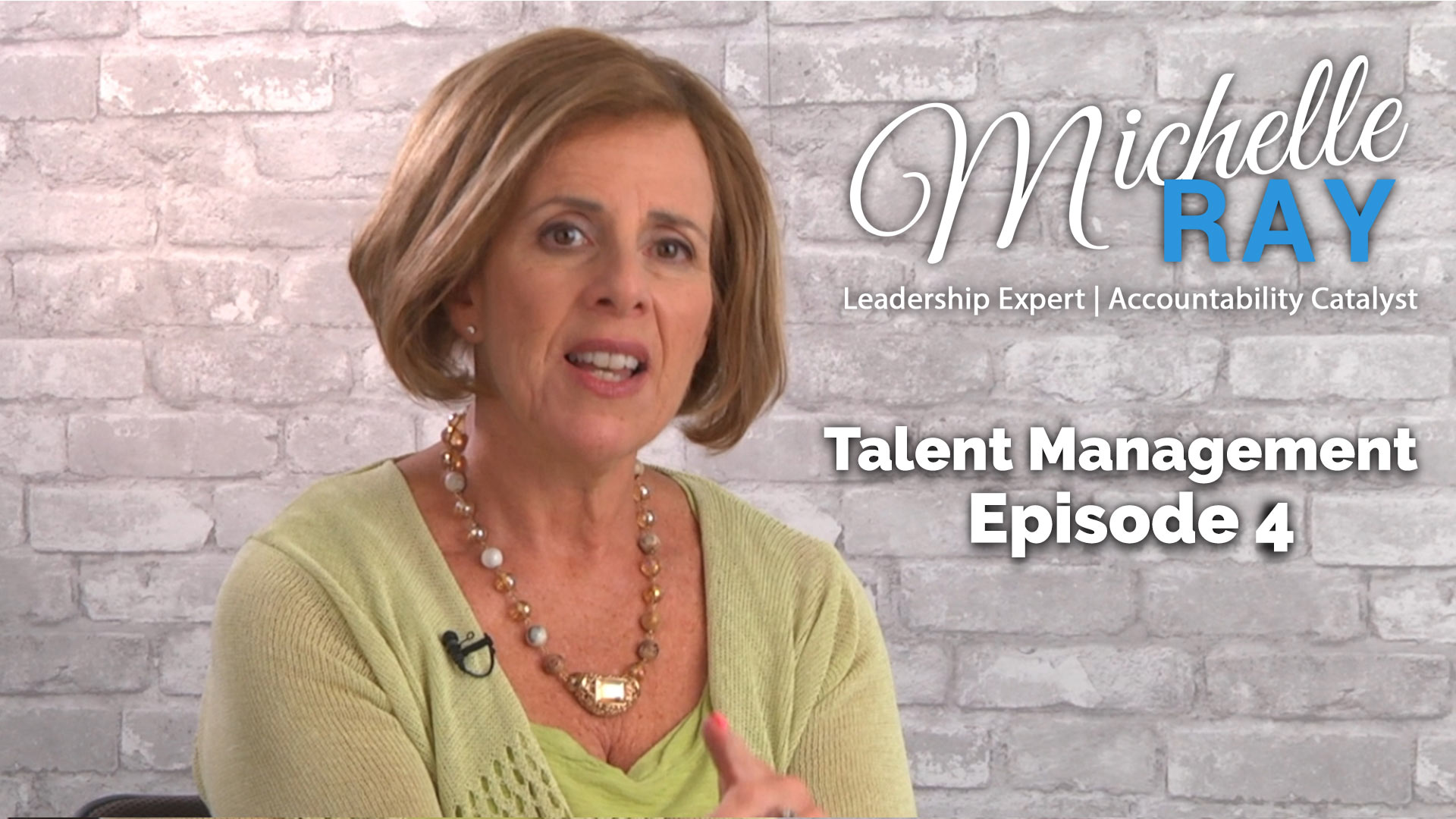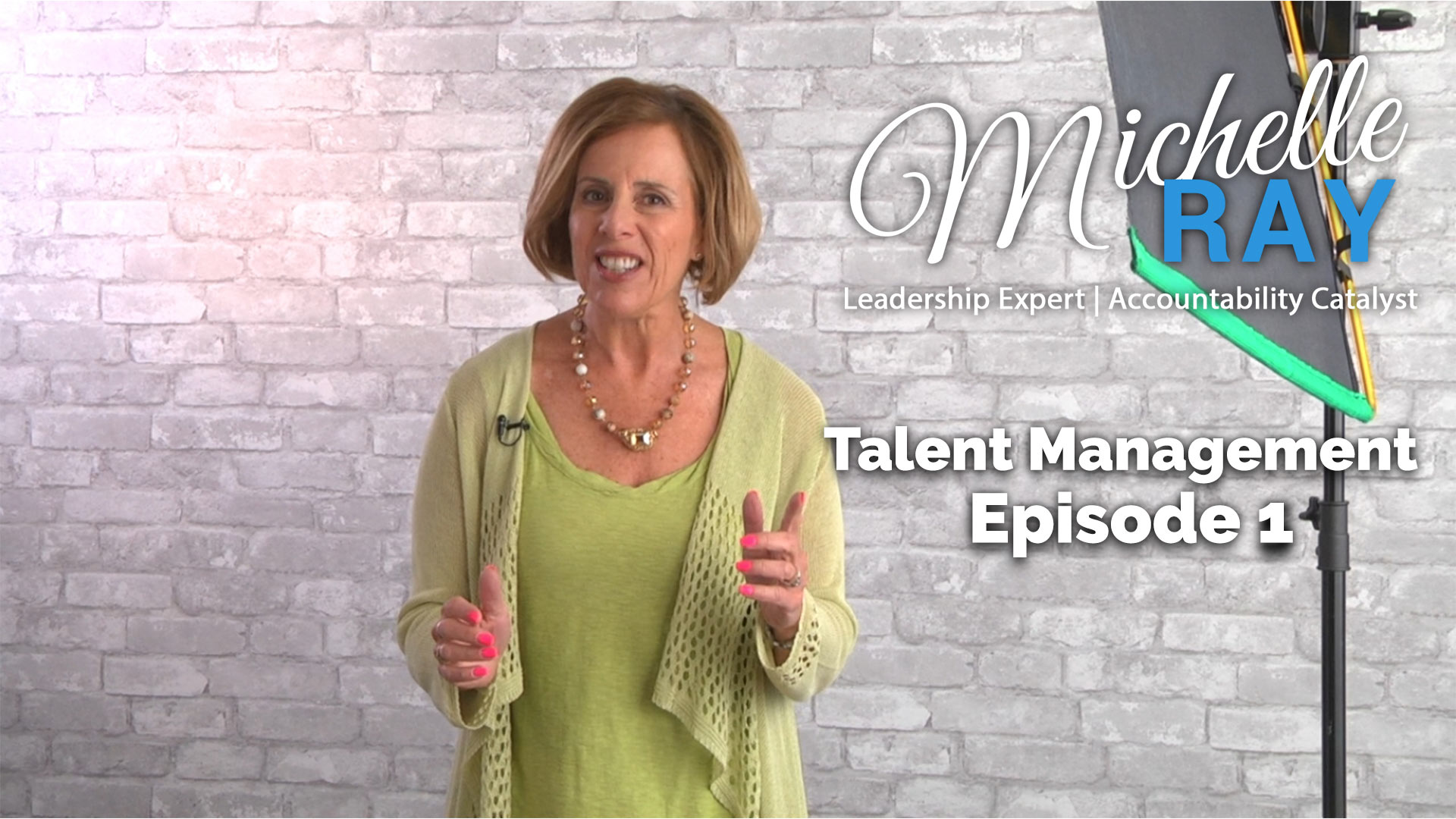 Six days before the world shockingly and unexpectedly shut down due to the COVID-19 pandemic, I was enjoying a lovely breakfast with a young woman named Chelsea. We had met the day prior at a conference where I had been engaged to speak to a group of leaders in the financial sector. As soon as I walked off the stage, Chelsea and I struck up a fascinating conversation about real-time leadership. It was clear that we could have talked all afternoon, but because Chelsea had to return to work, she suggested that we continue our chat the following morning over a meal before I left for the airport. [Read more…] about Three Reasons Why Your Business Needs Real-Time Leadership
Six days before the world shockingly and unexpectedly shut down due to the COVID-19 pandemic, I was enjoying a lovely breakfast with a young woman named Chelsea. We had met the day prior at a conference where I had been engaged to speak to a group of leaders in the financial sector. As soon as I walked off the stage, Chelsea and I struck up a fascinating conversation about real-time leadership. It was clear that we could have talked all afternoon, but because Chelsea had to return to work, she suggested that we continue our chat the following morning over a meal before I left for the airport. [Read more…] about Three Reasons Why Your Business Needs Real-Time Leadership
Talent acquisition
Evolving your Talent Management Strategy (Part 5)
What works today in terms of retaining your top talent may not necessarily be the case a year from now. And although your talent is utilizing and responding to your systems, your corporate philosophy and all the technology you currently have in place, the rapid pace of change may render your processes obsolete at lightening speed.
For example, many employers have recognized, only recently, the importance of developing a diverse talent pool. They’re reassessing gender and cultural biases to make sure that there is greater, equal opportunity.
In addition, greater diversity is now linked to greater profitability. To strong teams, and increased opportunity to innovate. Aristotle put it this way, “The worst form of inequity is trying to make unequal things equal.” So, how it is possible to achieve higher levels of retention when leaders are consistently seen as modeling exemplary attitudes and open-mindedness.
In summary, keep in mind that employees are more likely to stay because of genuine displays of trust, respect, camaraderie, and expressions of appreciation which acknowledge a persons value. It is these intangibles that are immeasurable and priceless aspects of your workplace culture. They are the keys to retention.
As you heard on my previous series on change, nothing changes if nothing changes. So, in summary, remember that your talent management strategy can’t be static. You need to adopt a fluid approach and be willing to adjust.
To succeed with your talent strategy, you need to be one step ahead of your talent. And invest in your talent both financially and non-financially by putting at least one or two of these ideas into practice. And as a result you will see higher levels of engagement, higher levels of retention, and a thriving workplace atmosphere.
This article is a transcript from Talent Management Ep.5 – Evolving your Talent Management Strategy on YouTube.
Michelle Ray (Twitter) is one of the best international leadership keynote speakers in Vancouver. She helps you discover your potential through presentations, coaching and consulting. With over 20 years of experience Michelle has worked with hundreds of companies around the world. She is taking bookings for speaking engagements and can be contacted at MichelleRay.com
Talent and your Brand (Part 4)
All of us should look at leadership as being a mindset that’s about being the leader of your own life, and we all have the choice to be able to do that. Can your business afford to be making headlines simply because your employer brand is constantly under fire?
In their book Employer Brand: Bringing the Best of Brand Management to People at Work, Simon Barrow and Richard Mosely talk about employer brand in terms of an organization’s reputation as an employer and its value proposition to its employees as opposed to its more general corporate brand reputation and value proposition to customers.
For your talent management strategy to succeed, your focus on your employer brand is as significant as your focus on workplace culture. Sought-after talent is constantly evaluating your brand’s reputation. This is especially true of the millennials. The millennials are going to comprise of 75% of your workforce by 2025. That’s not very far away.
Gone are the days when scrutinizing an employee’s resume was the sole domain of the employer. The tables have turned. Candidates are doing their own research, paying close attention to the status of your brand in the global marketplace. Information is easily available, and it’s almost impossible to erase a negative brand experience.
Some of you may remember Canada’s formerly most-loved coffee franchise became, as the Toronto Star reported, a brand in crisis. Many months later, the company is still reeling from the impact of their chosen reaction to the then-Ontario provincial government’s increase to the minimum wage.
By cutting out pay breaks, changing incentive programs and certain benefits to employees in an effort to counter the wage increase, news via word of mouth spread like wildfire.
The point is that not only is your customer evaluating your brand reputation. Your potential talent is doing the same. So in summary, remember, perception is reality. Your employer brand matters. Prospective talent is watching how you manage your brand’s reputation.
Are you being honest and transparent with your customers and your employees? And developing an employee-centric vision needs to be part of your overall talent management strategy.
This article is a transcript from Talent Management Ep.4 – Talent Management and your Brand on YouTube.
Michelle Ray (Twitter) is one of the best international leadership keynote speakers in Vancouver. She helps you discover your potential through presentations, coaching and consulting. With over 20 years of experience Michelle has worked with hundreds of companies around the world. She is taking bookings for speaking engagements and can be contacted at MichelleRay.com
Talent Management and an Outstanding Culture (Part 3)
You know, people want to be part of a culture where they feel that they matter, where they intuitively sense that they’re a fit, where there’s comradery, high morale. Where their ideas are heard, and validated, and appreciated. We’re attracted to a great culture. The motivators are a combination of tangible, and intangible. Sometimes it’s hard to put it into words. We just know that we’re a part of something special, and we want to contribute to the success of the business. We’re completely engaged.
The Conference Board describes engagement as discretionary effort. Now, what that means is that we want to do good work, as opposed to feeling obligated to get the job done. A great culture feeds on itself. There’s high trust, where individual values are completely aligned with company values.
Companies with great cultures hire not only for skill, they also want to ensure that an employees values totally mesh with their culture. Here’s a great example, South West Airlines. This company is being lauded in numerous articles, scholarly research, for making culture their number one priority. It’s a company that’s renowned for what Micah Solomon in Forbes Magazine called, “A Relentless focus on culture.” South West Airlines purpose is clear, and it’s very simple. To become the worlds most loved, most flown, and most profitable airline. The mission of South West Airlines, is dedication to the highest quality of customer service, delivered with a sense of warmth, friendliness, individual pride, and company spirit.
Imagine having statistics like this. South West is a company with a turnover rate of only four to five percent. That contrasts with double digital numbers of their competitors. In other words, loyalty and retention are byproducts of an outstanding company culture.
In summary, employees buy into the vision and mission of an organization when their efforts are acknowledged, when they know that their employer puts them first. Secondly, you want to hire people who are the right fit. While skills, and aptitude are important. Attitude, and values are equally, if not more important. There is a direct correlation between culture, turnover, and profitability. If you focus on the culture to create a workplace where people want to go to work, rather than feeling that they have to go to work. You will start seeing immediate, tangible results when it comes to your talent retention strategy.
This article is a transcript from Talent Management Ep.3 – Outsource Culture on YouTube.
Michelle Ray (Twitter) is one of the best international leadership keynote speakers in Vancouver. She helps you discover your potential through presentations, coaching and consulting. With over 20 years of experience Michelle has worked with hundreds of companies around the world. She is taking bookings for speaking engagements and can be contacted at MichelleRay.com
The Impact of Leadership on Talent Retention (Part 2)
Imagine investing time, money and energy to attract and recruit top talent at career fairs, and ultimately failing to plan for your new hires first days, weeks and even months at your organization. If you’re not doing all you can to inspire an individual to perform at his or her best at the outset, the chances are high that you’ve not only wasted your time and efforts attracting them, you’ve sown the seeds for disengagement and disenchantment from the first days on the job.
A Korn Ferry Future Step Survey conducted last year revealed that although almost all executives agreed that talent retention and mentorship are critical, about 25% of new hires will leave within the first six months, and the main reason for that is that their role wasn’t what they expected. What’s interesting is that 69% of companies surveyed say they have a formal onboarding program in place for all their new employees. However from the employee’s perspective, nearly a quarter of them say that their program lasted only one day, and about a third said they lasted only for a week. How inspiring is that?
The onboarding phase, this is a critically important period for a new employee. They need to receive purposeful, well thought out orientation and it needs to happen within the first 90 to 120 days. So ask yourself, do you have a strategy in place to welcome new recruits? Because during that time, this is what should happen, it’s a period where you’re establishing benchmarks. This is also a time where they get to connect with key personnel, it’s the time where you want to be able to provide them with hands on training and support, and that’s how they’re able to acclimatize to the culture. Remember, those first 60 to 90 days are critical, we cannot expect people to just fend for themselves.
In summary, your onboarding strategy has to be well thought out and intentional. When your organization fails to setup a new hire for success in the early stages of his or her career, job dissatisfaction and ongoing turnover are likely consequences. So let’s realize that talent retention can be improved by practicing preventative maintenance, making the appropriate arrangements for new employees to flourish right from the first day.
This article is a transcript of Talent Management Ep.2 – The Impact of Leadership on Talent Retention on YouTube.
Michelle Ray (Twitter) is one of the best international leadership keynote speakers in Vancouver. She helps you discover your potential through presentations, coaching and consulting. With over 20 years of experience Michelle has worked with hundreds of companies around the world. She is taking bookings for speaking engagements and can be contacted at MichelleRay.com
On-boarding new Talent (Part 1)
As leaders, your most pressing challenge is staying ahead of the curve. When it comes to your talent management strategy, the key to gaining the strategic advantage is your people. No matter how high tech the world continues to be, the success of your business, no matter what industry you work in, is dependent upon retaining the best talent.
Name any segment of the market right now that isn’t feeling he impact of a talent shortage. How did this happen? Well, there are many reasons that can explain the panic mode that businesses are experiencing. The retirement of millions of baby boomers and the availability of millennials to replace them, it counts for much of the struggle. Although, interestingly, organizations have known for some time that they will need to have a strategy in place to attract new talent.
Unfortunately, many haven’t fully anticipated the global competition for talent. In addition leaders at many levels are unaware of the impact of their own reputation. Personally as well as the reputation of their own employer brand on a new hire’s decision to stay.
In this series we’re gonna look at the key elements that you need to have in place to attract and retain the best people.
We need to be asking ourselves, if we’re leading ourselves, are we being the best possible example that we can be?
We manufacture a lot of our fear. All of us should look at leadership as being a mindset. It’s about being the leader of your own life and we have all have to choice to be able to do that.
You know there’s an old adage, people don’t leave companies, they leave managers. And this has total applicably for so many of you who are grappling right now with the talent shortage. Gallop research has found that 50 percent of employees leave because they’re frustrated with their boss. Now why are they frustrated? They’re frustrated for a myriad of reasons. Lack of direction, they can’t see the opportunity path, they feel excluded from the decision making process, or a lack of communication or maybe it could be because they feel that their boss is arrogant or narcissistic or even worse, they’re an egomaniac who takes all the credit when they do a good job.
Now what does this do? It creates a total lack of trust and it makes us feel insecure and start to question what we are doing in this position. So think about how many times you have left a position because of poor leadership. Or maybe the opposite is true. You’ve stayed because of an inspiring, caring leader who validates your work and makes it a priority to build a relationship with you. Every one of us wants that and we also want to feel like we’re doing purposeful, meaningful work and we want to see that connection between what we’re doing and why we’re doing it.
So ask yourself, as a leader, are you demonstrating this? You see, leading by example is the one aspect of your talent management strategy that you can control. Jim Clifton, the CEO of Gallop, references the fact that one 10 percent of people have the god-given talent to lead. That is an amazing statistic. You see, for years Gallop has surveyed more than two million people in more than 30 countries on the topic of leadership and while there’s a great deal of emphasis on employee engagement, Gallop research also shows that more than 30 percent of leaders are disengaged. Now that is alarming. So consider the link between a disengaged leader and a disengaged employee.
What this means, and is a reminder for all of us, is that leaders profoundly influence the atmosphere and the direction of an individual’s career path. How can we be inspired to stay when our leaders are disengaged? There is a direct correlation between talent retention and a leader’s motivation. How they are engaged at work is gonna impact your team.
In summary, let’s remember that leaders profoundly impact an employee’s decision to stay or go. Also that leaders who are engaged themselves can engage others. Positive energy is infectious and the key is to remember that you want to be the leader that they stay for.
This post is a transcript of the content of a new video series on YouTube. Check it out here!
Michelle Ray (Twitter) is one of the best international leadership keynote speakers in Vancouver. She helps you discover your potential through presentations, coaching and consulting. With over 20 years of experience Michelle has worked with hundreds of companies around the world. She is taking bookings for speaking engagements and can be contacted at MichelleRay.com






